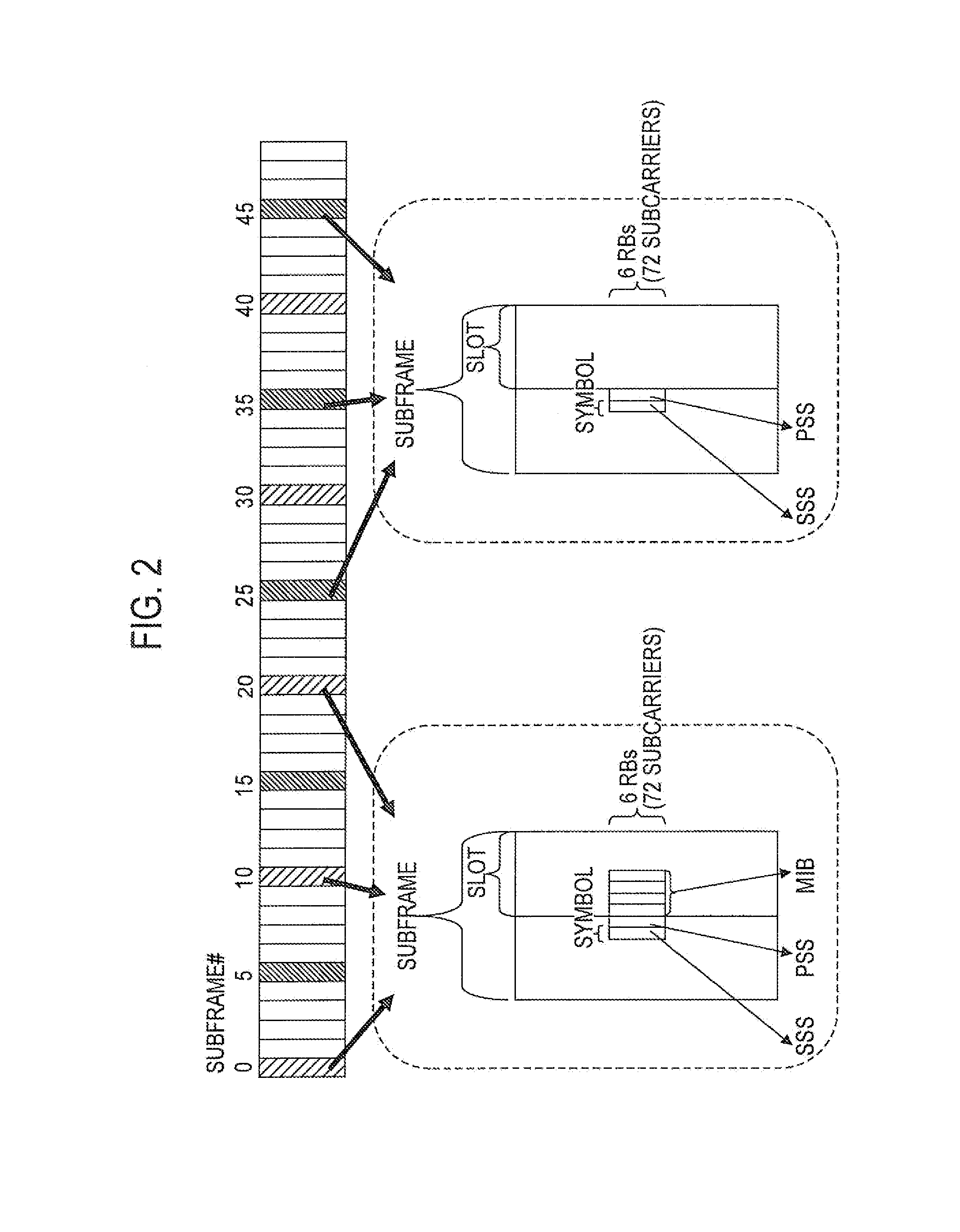Communication control method, base station, and user terminal
a communication control and user terminal technology, applied in the field of communication control methods, a base station and a user terminal, can solve the problems of user terminals connected with high-power base stations, low-power base stations may receive uplink interference from user terminals, and user terminals that cannot synchronize with low-power base stations nor perform measurement for low-power base stations
- Summary
- Abstract
- Description
- Claims
- Application Information
AI Technical Summary
Benefits of technology
Problems solved by technology
Method used
Image
Examples
first embodiment
[First Embodiment]
[0045]FIG. 1 shows a mobile communication system according to the present embodiment. A mobile communication system according to the present embodiment is configured based on LTE Advanced (after the 3GPP Release 10).
[0046]As shown in FIG. 1, the mobile communication system has a macro base station (Macro evolved Node-B: MeNB) 100-1 forming a large-scale coverage area, a pico cell base station (Pico evolved Node-B: PeNB) 100-2 forming a small-sized coverage area, and an eNB 100-3 in the neighborhood of the MeNB 100-1. As an eNB 100-3, an MeNB is illustrated but it may be a PeNB. Also, FIG. 1 shows only one PeNB 100-2 installed within the coverage area of the MeNB 100-1, but multiple PeNBs 100-2 may be installed within the coverage area of the MeNB 100-1. Each of the MeNB 100-1, PeNB 100-2, and eNB 100-3 is connected with one or multiple user terminals (User Equipment: UE).
[0047]Hereinafter, a UE connected with the MeNB 100-1 is referred to as an MUE 200-1, a UE conn...
second embodiment
[Second Embodiment]
[0090]In the following, a second embodiment is described in terms of differences from the first embodiment.
[0091]In the present embodiment, in a CC1, a PeNB 100-2 transmits new PSS / SSS / MIB (second PSS / SSS / MIB) at another frequency band (a second frequency band) in addition to normal PSS / SSS / MIB (first PSS / SSS / MIB) transmitted in a center frequency band (a first frequency band). Hereinafter, such new PSS / SSS / MIB is referred to as “ePSS / eSSS / eMIB”. Basically, the configuration of ePSS / eSSS / eMIB is same as the configuration of normal PSS / SSS / MIB. However, eMIB may contain frequency offset information of ePSS and eSSS. Here, the frequency offset means frequency offset of ePSS and eSSS from the normal PSS / SSS, that is, frequency offset of ePSS and eSSS from a DC sub-carrier. Note that the frequency offset of eMIB can be expressed by immediate data of the number of resource blocks (notation such as +10, −13 as offset from the center or, normal RB number notation such as...
PUM
 Login to View More
Login to View More Abstract
Description
Claims
Application Information
 Login to View More
Login to View More - R&D
- Intellectual Property
- Life Sciences
- Materials
- Tech Scout
- Unparalleled Data Quality
- Higher Quality Content
- 60% Fewer Hallucinations
Browse by: Latest US Patents, China's latest patents, Technical Efficacy Thesaurus, Application Domain, Technology Topic, Popular Technical Reports.
© 2025 PatSnap. All rights reserved.Legal|Privacy policy|Modern Slavery Act Transparency Statement|Sitemap|About US| Contact US: help@patsnap.com



